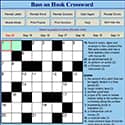Bass on Hook is Supported by our readers. As an Amazon Associate We earn commissions from qualifying purchases. For more informtion read our Amazon Affiliate Disclosure and Affiliate Disclosure Policies.
Kamikaze Crankbaits
By Nick Ruiz
Nine out of ten times when an angler hears the word "crankbait" the immediate picture that comes to mind is a large lip, deep diver in clear obstruction free, open lake water.
Not so.
If by the end of this article I manage to convince you that this is not the only application to use such crankbaits, then I have done my job.
What we're discussing here ain't just your daddy's crankbaits anymore!
The first time I discovered the value of using traditional crankbaits in heavy cover, the only way I could describe the results was "unbelievable".
That experience entailed throwing a Worden's Timber Tiger, a perfect bait for this application into a venerable maze of standing timber and gigantic laydowns, something I thought at the time was just short of insane.
I figured by doing this I would just run up a huge bill in the form of lost cranks.
Incidentally this tune immediately changed significantly when bass began literally coming out of the wood work to slam the fleeing lure.
Though as simple as it sounds to throw cranks into cover, there is a certain amount of judgment and skill needed to make a technique like this really work properly.
Techniques And Tactics For Throwing Crankbaits Into Heavy Cover
With this tactic, location as well as the actual type of physical cover will both play a huge roll in determining weather you're pulling bass out of the heavy stuff or spending the rest of the afternoon in the tackle shop replacing lost lures.
First of all we'll discuss the type of cover needed to perform this seemingly suicidal presentation.
While the technique in theory can be applied to anything, a degree of judgment must be used to determine the effectiveness of such a bait in each situation.
I prefer large laydowns, standing timber, stumps and a variety of man made structures the best of which by far is anchored docks and bridge support pylons.
You'll usually want to avoid anywhere with a large amount of intricate tangles such as the end branches of laydown logs, cat tails, bull rushes and man made Christmas tree type reefs.
Here is where a good pair of polarized sunglasses and a keen eye for productive cover will serve you well.
The basic technique which I have learned through trial and error is to intentionally "crash" crankbaits into large, solid pieces of structure.
The purpose of which is to create the effect of a disoriented fleeing baitfish, hell bent on escape from a predator.
Crankbait Sound Is The Main Attractant
As it turns out the number one reason for strikes for this presentation is usually not visual.
Rather, it's the sound and more importantly the vibration produced when a crankbait comes in contact with various pieces of cover.
A large crankbait speeding it's way through a stump field knocking and bouncing off wood makes quite a vibration and sound array underwater which will travel 10 times farther than it would above the surface.
Which, as I have learned is the equivalent of ringing an aquatic dinner bell for actively feeding fish.
Of course each crankbait and each type of cover will produce a different sound pattern but regardless, the idea is generally the same.
Experimenting with different baits in different situations will eventually yield a few front runners that you will want to use all the time for this technique.
For education sake I will list my favorites but these are not even close to the tip of the iceberg, as undoubtedly each body of water will have its own top producers.
My Favorite Crankbaits For Fishing In Heavy Cover
So far through experience on a few different bodies of water I have found that the Bagley's Killr' B, the Poe's Competition Cedar, the Risto Rapala and my personal favorite the Worden's Timber Tiger series are a safe bet when fishing this method.
If you are familiar with these baits you might notice they share some design similarity.
The importance not being in the body but rather a very wide lip.
The lip in this case is a bit more important than the body as it is usually the lip that makes contact to the cover you are intentionally running it into.
A wide lip will give maximum sound and vibration when contacting cover and will also deflect the rest of the bait clear as to prevent snagging as well as damage to the bait itself.
Another great bait to use with this method is the Poe's Pro Cedar crankbait series as I have used them frequently and have rarely had problems with them hanging up and should they snag the cedar is incredibly buoyant, it will sometimes actually float free.
Finally, a bait that works extremly well in this situation is the extremly hard to find Fred Arbogast "Mudbug" crankbait.
This huge, metal lipped monster is perfectly suited for this method of fishing as apparent from its design and the testimony of those who use it.
Though what ever your favorite bait might be, the technique is basically the same.
Summing Up Throwing Crankbaits Into Heavy Cover
As far as color in this particular discipline of fishing, its one of the least important factors in the equation.
As long as the sound and action are there the color is generally less important.
A good rule of thumb is to keep the colors natural.
Shad, sunfish and perch patterns work well even in the muddiest water.
Again, sound being the big seller here.
While on the subject of running crankbaits into things let me say that if there was a secret weapon hidden within a technique, it would be this.
If by chance you come across metal pilings of any sort FISH IT!
Apparently the sound of crankbait meeting metal overrides some sort of primeval instinct of the bass that just makes it want to kill that lure.
I have had experience with small mouth in a small river system as well as largemouth in a lake chain where metal bridge supports are common place and I will say the results are absolutely mind boggling.
Though I am not positive of what makes this so effective, my guess is that is has to be the sound.
Like I mentioned earlier, apparently plastic on metal does something to bass that I wish all the other things we did to catch them did!
With this in mind the next time you hit the water and the old stand by's aren't paying off the way you'd like them to, consider throwing some "Kamakazee Crankbaits".
You might be pleaseantly suprised with the end results.
Catch ya' on the water...
Nick Ruiz
Look for other articles written by Nick Ruiz in Nick's Pro Staff Angler Profile










